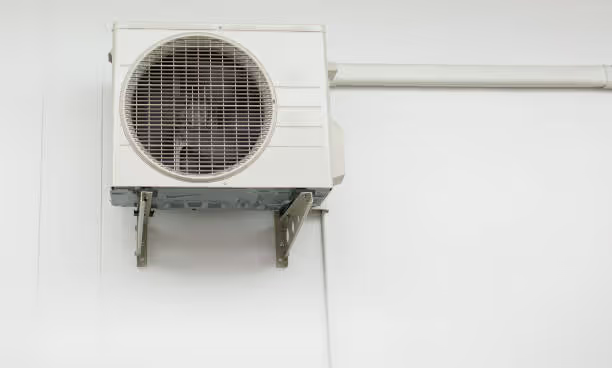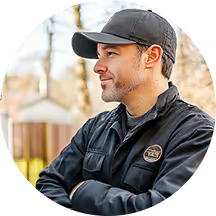Mini Split Repair in Oyster Bay, NY
Mini split repair in Oyster Bay, NY keeps ductless systems working reliably through humid Long Island summers and cold, damp winters. Whether your wall-mounted unit lost cooling on a July afternoon or the outdoor condenser is showing communication faults after winter, prompt, accurate repairs restore comfort, protect the system, and reduce long-term costs. This page explains common mini split problems in Oyster Bay homes, how diagnostics work, parts and replacement policies, typical response and repair times, emergency repair availability, pricing and estimate practices, repair warranties, and practical prevention tips.

Why timely mini split repair matters in Oyster Bay
Oyster Bay’s coastal climate increases risk factors for ductless systems: salt air speeds outdoor corrosion, high summer humidity increases strain on refrigerant circuits, and older local homes may have compact installation spaces that complicate airflow. Leaving a failing mini split unrepaired can lead to higher energy use, permanent compressor damage, or refrigerant contamination. Early diagnosis and repair protect comfort and system lifespan.
Common mini split issues in Oyster Bay homes
- Loss of cooling or heating: Reduced output, uneven temperatures, or no conditioned air.
- Refrigerant leaks: Low charge leading to icing on evaporator coils or poor performance.
- Compressor or inverter faults: Failure to start, unusual noises, high head pressure, or inverter error codes.
- Electrical faults: Tripped breakers, burned wiring, failing capacitors, or control board issues.
- Frozen evaporator coil: Caused by low airflow, dirty coils, or low refrigerant.
- Fan motor or blower problems: Intermittent operation, noisy fans, or reduced airflow.
- Drainage and condensation issues: Clogged condensate lines causing overflow or humidity problems.
- Corrosion of outdoor unit: Salt corrosion on fins, coils, or electrical connections causing leaks or shorts.
Diagnostic and troubleshooting process
Diagnostics focus on pinpointing root causes instead of guess repairs. Typical on-site diagnostic steps:
- System history and visual inspection: Check filters, indoor and outdoor units, mounting, and visible corrosion or damage.
- Airflow verification: Measure temperature split and inspect blower, filters, and ductless airflow path.
- Electrical checks: Inspect breakers, fuses, wiring connections, contactors, capacitors, and control boards for signs of heat damage or loose connections.
- Refrigerant and pressure testing: Use gauges and leak detectors to verify charge and locate leaks; dye or electronic leak detection when needed.
- Compressor and inverter testing: Read error codes from the inverter controller, check start/stop behavior, measure amp draw and pressures to assess compressor health.
- Condensate and drainage inspection: Clear and test drain lines and pans for proper drainage.
- System performance test: Run full cooling and heating cycles to confirm operation under load.
Diagnostics are explained in plain language during inspection so you understand the problem, options, and likely outcomes.
Repair types and parts replacement policy
- Standard repairs: Refrigerant recharge, fan motor replacement, control board repair, condensate clearing, and capacitor or relay swaps.
- Major repairs: Compressor replacement, inverter module replacement, coil repair or replacement, and outdoor unit replacement.
- Parts policy: When possible, repairs use OEM parts for compatibility and longevity. For older or discontinued models we may offer high-quality aftermarket or factory-refurbished parts as an option. Common replacement parts are carried in trucks to complete many repairs on the first visit.
- Transparency: Repairs are itemized so you can see parts, labor, and warranty terms for each component. Where multiple repair routes exist, alternatives are presented with tradeoffs in cost and expected lifespan.
Estimated response and repair times; emergency repairs
- Response times: For non-emergency calls within Oyster Bay, same-day or next-business-day appointments are commonly available depending on scheduling and parts needs. Typical diagnostic visits take 60 to 90 minutes.
- Repair times: Small repairs (capacitor, filter, drain clearing) often completed same day. Refrigerant leak repairs, coil or compressor replacements can take 1 to 3 business days depending on part availability. Full outdoor unit replacements may take longer if custom refrigerant lines or permits are required.
- Emergency repair availability: 24-hour emergency service is available for critical failures that affect safety or essential comfort, such as total system shutdown in extreme temperatures, refrigerant leaks with high risk, or electrical hazards. Emergency calls receive prioritized dispatch and faster on-site response when possible.
Pricing and estimates
- Diagnostic fee: Most repairs begin with an on-site diagnostic and inspection fee that is applied toward repair costs when you approve the work.
- Written estimates: After diagnosis you receive an itemized, written estimate detailing parts, labor, estimated time, and warranty terms. Estimates differentiate between repair and replacement when both are viable.
- Pricing approach: Common repairs are offered as fixed-price options when scope is clear. For complex issues, pricing is provided as time and materials with an upfront cap when requested.
- Cost factors: Pricing varies by part availability, system age and brand, whether OEM parts are required, refrigerant type (R-410A vs newer blends), accessibility of installation, and whether electrical upgrades are needed.
Warranty on repairs
- Labor warranty: Repairs are backed by a labor warranty for workmanship. Typical labor warranties range from 30 to 180 days depending on repair type. Exact labor warranty is detailed in your estimate and repair invoice.
- Parts warranty: Parts carry manufacturer warranties when OEM parts are used. Aftermarket or refurbished parts will have clearly stated warranty terms before approval.
- Follow-up service: If a repair fails within the warranty period under normal use, follow-up diagnosis and corrective service are handled per the warranty terms.
Tips to prevent future mini split breakdowns in Oyster Bay
- Regular maintenance: Schedule annual service before summer and winter to check refrigerant, electricals, and coils.
- Keep filters clean: Replace or wash filters every 1 to 3 months during heavy use to maintain airflow and efficiency.
- Protect outdoor unit: Clear vegetation, maintain 2 to 3 feet of clearance, and rinse salt buildup from the condenser fins after storms or high-salt exposure.
- Improve drainage: Ensure condensate lines slope correctly and are free of debris to prevent overflow and microbial growth.
- Watch for early signs: Unusual noises, gradual loss of cooling, ice build-up on coils, or persistent error codes indicate a need for prompt service.
- Use system-friendly settings: Avoid extreme thermostat swings and allow the inverter to modulate smoothly; frequent power cycling can stress electronics.
- Electrical circuit care: Make sure the unit is on a dedicated circuit and protected by properly sized breakers to prevent electrical stress.
Closing — long term value of professional mini split repair
Prompt, professional mini split repair in Oyster Bay, NY restores comfort quickly and prevents preventable, expensive failures. Effective diagnostics, transparent estimates, OEM-focused parts policies, and local knowledge of coastal climate impacts help ensure repairs are durable and cost-effective. Regular maintenance tailored to the salty, humid Long Island environment further extends system life and improves efficiency, protecting your investment and keeping your home comfortable year round.
Customer Testimonials
Hear directly from homeowners who trust Bobby O’s HVAC Inc. for fast response times, honest service, and lasting comfort.











